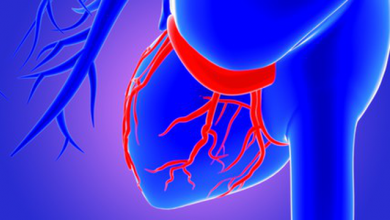Search results
Jacqueline Saw
Job title: Clinical Associate Professor
Author
Author(s):
Marcos Garcia-Guimarães
,
Teresa Bastante
,
Paula Antuña
,
et al
Added:
3 years ago
Spontaneous coronary artery dissection (SCAD) can be defined as the acute development of a false lumen within the coronary artery wall that may lead to flow limitation by compression of the true coronary lumen. This definition of SCAD excludes coronary dissections that are secondary to atherosclerotic disease, produced by the extension of an aortic dissection, iatrogenic or related to a trauma.1…
View more
Author(s):
Christian Fink
,
Henrik J Michaely
,
Stefan O Schoenberg
Added:
3 years ago
Contrast-enhanced magnetic resonance angiography (ce-MRA) has become an established and routinely used imaging modality and has largely replaced invasive diagnostic digital subtraction angiography (DSA). There have been ongoing technical developments in magnetic gradient hardware, coil design and pulse sequence design for ce-MRA, resulting in an increased spatial and temporal resolution. The…
View more
Author(s):
Mathias Goyen
Added:
3 years ago
Atherosclerosis is a generalised disease and contributes to cardiac death, stroke, limb loss and a range of other illnesses. Disease in the major arteries, including the infra-renal abdominal aorta, internal iliac arteries, renal arteries and peripheral vasculature, remains a major cause of morbidity and mortality. For example, the prevalence of disease in the infra-renal abdominal aorta ranges…
View more
Author(s):
Mathias Goyen
Added:
3 years ago
Atherosclerosis is a generalised disease and contributes to cardiac death, stroke, limb loss and a range of other illnesses. Disease in the major arteries, including the infra-renal abdominal aorta, internal iliac arteries, renal arteries and peripheral vasculature, remains a major cause of morbidity and mortality. For example, the prevalence of disease in the infra-renal abdominal aorta ranges…
View more
Author(s):
Tim Leiner
Added:
3 years ago
In recent years, magnetic resonance angiography (MRA) of the peripheral vascular tree has evolved into a widely available and valuable technique in the diagnostic and pre-interventional work-up of patients with peripheral arterial disease. Numerous studies have demonstrated the diagnostic accuracy of MRA for the assessment of abdominal and peripheral arteries, and in many hospitals the technique…
View more
Author(s):
Ying X Gue
,
Rahim Kanji
,
Sabiha Gati
,
et al
Added:
3 years ago
Cardiovascular disease is the leading cause of death globally, with 85% of cardiovascular deaths attributed to acute coronary syndrome (ACS) and stroke.1 The development of coronary atherosclerosis and subsequent plaque disruption, predominantly from plaque rupture or erosion, is responsible for the majority of ACS presentations. Persistent occlusion of the coronary artery due to thrombus,…
View more
Author(s):
George Thomas
,
Emmanuel L Bravo
Added:
3 years ago
Distinct hypertensive syndromes causing drug-resistant hypertension are increasingly being recognised. The ability to recognise these disorders has come as a result of a better understanding of their pathogenesis and the availability of sensitive and accurate diagnostic tools. The particular appeal of making the diagnosis centres around the potential curability of the hypertension, with…
View more
Author(s):
Costas P Tsioufis
,
Alexandros Kasiakogias
,
Dimitris Tousoulis
Added:
3 years ago
Recent guidelines have defined resistant hypertension (RHT) as blood pressure (BP) that does not fall below 140/90 mmHg, despite a therapeutic strategy that includes appropriate lifestyle measures, plus a diuretic and two other antihypertensive drugs belonging to different classes at adequate doses.1 The definition of RHT has been quite arbitrary, a fact reflected on various definitions of ideal…
View more
Author(s):
Carsten Schwenke
,
Monica Boos
,
Rainer Hentrich
,
et al
Added:
3 years ago
Since its introduction in 1993,1 contrast-enhanced magnetic resonance angiography (ce-MRA) has been considered the technique of choice for angiographic examination of most regions of the body. This is because of several technical and clinical advantages in comparison with non-contrast-enhanced MRA (nce-MRA) imaging. In this article, we focus on patients with suspected peripheral arterial…
View more












